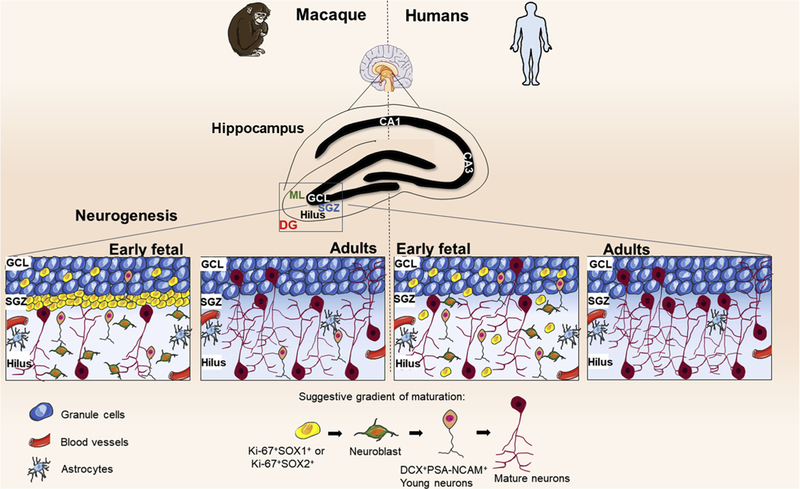Fig. 5.

Hippocampal neurogenesis was not detected in adult humans by Sorrells et al. (2018). The study of Sorrells and colleagues suggests differences in neurogenesis among primates. In humans, in the dentate gyrus (DG), a proliferative subgranular zone (SGZ) is not formed near the granule cell layer (GCL), instead, the proliferating cells, which express progenitor stem markers, are mostly scattered in the hilus and depleted from the 7 years old. The number of young neurons, DCX + PSA-NCAM + cells, in GCL and hilus, also decrease from birth and in adult individuals, these cells are no longer found in the hippocampus. In adult humans, the predominance of morphologically mature neurons expressing PSA-NCAM + and NeuN was observed. In rhesus macaque (M. mulatta) there are some differences in the process of neurogenesis. In DG the formation of a germinative proliferative subgranular zone (SGZ) is observed. The number of proliferative cells and young neurons DCX + PSA-NCAM + decreases until the 7 years old, an age in which the germ cell layer in the SGZ already becomes dispersed. A developmental normalization has shown that the decrease of young neurons in humans is more accelerated than in monkeys, which allows the identification of still rare DCX + PSA- NCAM + neurons in adult monkeys. PSA-NCAM: Polysialylated neural cell adhesion molecule; DCX: doublecortin; NeuN: neuronal nuclear antigen.
